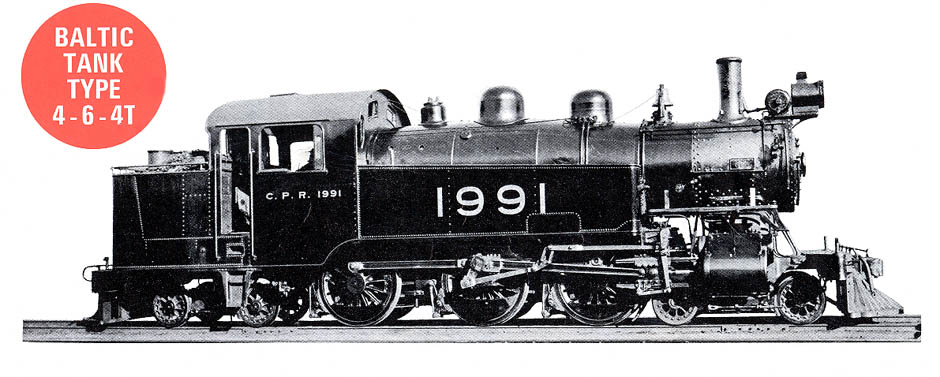 |
|
Collectors' Item 15 by Omer Lavallee The "tank" type locomotive, so called because it carried its fuel in a small bunker and its water supply in large tanks at the side of the boiler, is basically a European design. Thus, the facilities normally provided by a separate tender were placed, in abbreviated form, on board the locomotive itself. Tank locomotives enjoyed several advantages over normal tender locomotives, chief among them being their ability to operate at service speeds with equal facility in either direction; their compactness; and the added weight available for adhesion. Such features were useful in suburban or branch line service, and in yard switching. Numbered among the disadvantages were the necessity for the locomotive to function within fairly close proximity to a fuel and water supply. The conditions which made such locomotives popular outside North America were found to a limited degree on this continent, and as a consequence, |
very few tank locomotives were used by
main line railways here, though smaller versions of the type were in great demand for
industrial plant applications. Those few which were owned by public railways were
essentially passenger suburban locomotives, such as No. 1991 illustrated here.
This locomotive, class T2a, was one of four |
|